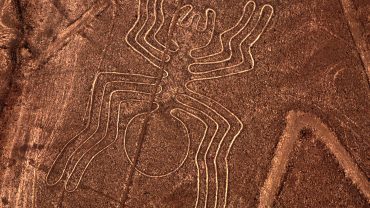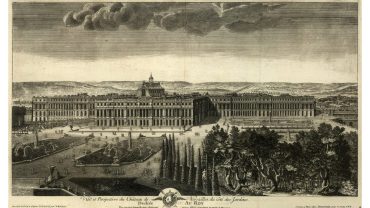The armies of ancient Rome were some of the most feared in the history of warfare, none more so than Legio IX Hispana, or the Ninth Legion. An elite regiment with a reputation for bravery, discipline, skill, and, when required, brutality, it was raised by Julius Caesar himself, and counted amongst its number some of Rome’s most powerful future leaders.
But it’s not their prowess on the battlefield that makes the Roman 9th Legion so fascinating. It’s the fact that they vanished from the historical record without explanation, leaving behind a legacy shrouded in mystery and sparking centuries of speculation about their ultimate fate.
So what happened to the 9th Legion? Where did they meet their demise? Was there a lost Roman legion in Britain, or did they make it to Judea or Parthia, only to be slaughtered elsewhere?
The Story of the Ninth Legion

The 9th flourished under Julius Caesar (Credit: imageBROKER/Sunny Celeste via Getty Images)
The Roman 9th Legion, or Legio IX Hispana, was one of Rome’s most famous military units, with origins tracing back to at least the first century BC. It remains uncertain when the legion was founded, but it was under Julius Caesar, during the Gallic Wars from 58 BC, that the Ninth cemented its reputation for discipline and bravery. The legion – sometimes called the Caesarian Ninth Legion – fought with distinction in pivotal battles including Dyrrhachium and Pharsalus, and also in Caesar’s African campaign in 46 BC.
The Ninth also fought alongside Octavian in his war with Mark Antony in 31 BC as well as at the Battle of Actium, a pivotal naval battle in the Ionian Sea.
Under Octavian – by now renamed Gaius Julius Caesar Augustus, the founder and first emperor of the newly created Roman Empire – the Ninth Legion was dispatched to Hispania (virtually all of modern-day Spain and Portugal) to fight in the Cantabrian Wars, which is where it acquired the nickname Hispana (meaning ‘stationed in Hispania’).
From Hispania, the Roman 9th Legion most likely fought against the Germanic tribes, and may have then been relocated around the time of Augustus’s death (14 AD) to the province of Pannonia, which today encompasses parts of Hungary, Slovakia, Austria, Croatia, Serbia, Slovenia, and Bosnia and Herzegovina.
But what happened to the 9th Legion after the soldiers arrived in Britain in 43 AD? This is where the story takes an unexpectedly dramatic turn.
The Lost Roman Legion
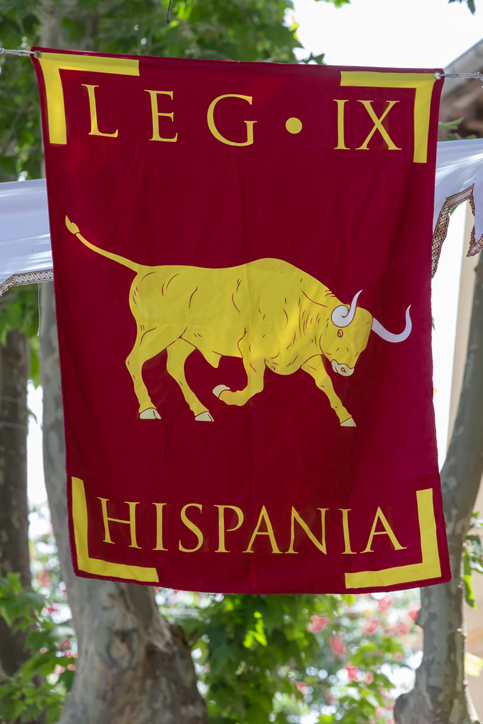
The banner of the Legio IX Hispana (Credit: kake1967 via Getty Images)
Under the orders of Emperor Claudius and commanded by Aulus Plautius, the Romans invaded Britannia in 43 AD. Direct evidence of the legions who were sent is sparse, but one, Legio II Augusta, led by future Roman emperor Vespasian, was attested to be in the first wave of troops.
It’s believed that three other legions – Legio IX Hispana, Legio XIV Gemina, and Legio XX Valeria Victrix – were also among the first waves to land in Britain. However, because Roman military units and their auxiliary cohorts were frequently reassigned according to shifting needs, the historical record remains unclear about the order in which these legions arrived.
So what happened in the sixty-five years the Roman 9th legion was in Britain?
43 – 49 AD
The Ninth probably arrived somewhere along the South Coast – anywhere from Richborough in Kent to Chichester in West Sussex – and during the early campaigns, the legion moved north establishing forts at Longthorpe (near Peterborough) and Leicester, and then building a major fortress at Lincoln (Lindum Colonia).
50 – 57 AD
Around 50 AD, the Ninth Legion was one of two legions that defeated Caratacus, a chieftain of the Catuvellauni tribe and a prominent resistance leader. Later, under Caesius Nasica, the legion suppressed the first revolt of Venutius, king of the Brigantes tribe, somewhere in present-day Yorkshire.
60 – 61 AD
During the Boudiccan Revolt, it’s believed a significant portion of the Ninth Legion’s infantry soldiers under Quintus Petillius Cerialis were wiped out trying to relieve Colchester (Camulodunum). Only the detachment’s cavalry escaped, and the legion was later reinforced with men drafted in from Germania.
71 AD
Cerialis returned as governor of Britain and led the Ninth in campaigns against the Brigantes in northern England. The legion moved from Lincoln to York (Eboracum), constructing a new fortress that became their base. Surviving tile stamps can date the construction of the defences at York very precisely.
82 – 83 AD
The Ninth Legion, now under the broader command of Governor Gnaeus Julius Agricola, played a significant role in the northern campaigns of Britannia during the late 1st century AD. According to Tacitus – Agricola’s son-in-law and principal biographer – a detachment of the Ninth came under surprise attack by Caledonian forces during one of Agricola’s advances into what the Romans called Caledonia (roughly corresponding to modern-day Scotland). Tacitus describes the Caledonians launching a sudden night assault on the Roman camp, catching the soldiers off guard. Though initially thrown into disarray, the Roman troops were ultimately saved by a timely cavalry counterattack led by Agricola, allowing the Romans to repel the attackers and regroup.
Later, elements of the Ninth are believed to have taken part in the Battle of Mons Graupius (circa AD 83), where Agricola decisively defeated a coalition of Caledonian tribes led by the chieftain Calgacus. The precise location of this battle remains unknown, but most historians place it somewhere in northeastern Scotland.
108 AD
The last confirmed evidence of the Ninth Legion in Britain is an inscription found in 1864 on a gateway at York, marking the completion of construction work. This inscription is dated to around 107-108 AD, during the reign of Emperor Trajan. This is a key date in the story of the Ninth – and helped spark the idea of a famous lost Roman legion in Britain.
The inscription translates as, ‘The Emperor Caesar Nerva Trajan Augustus, son of the deified Nerva, Conqueror of Germany, Conqueror of Dacia, pontifex maximus, in his twelfth year of tribunician power, six times acclaimed emperor, five times consul, father of his country, built this gate by the agency of the 9th Legion Hispana.’
No further definitive evidence of the Roman Ninth Legion has been found in Britain after 108 AD. However, stamped bricks and inscriptions dated between 104 and 120 AD discovered in Nijmegen, in the Roman province of Germania Inferior (modern-day Netherlands), indicate that the legion – or at least a substantial detachment – was stationed there. This has led many historians to conclude that the Ninth continued to serve on the Rhine frontier following its departure from Britain. Beyond this point, no further records of the Ninth have ever been discovered.
What Happened to the 9th Legion?
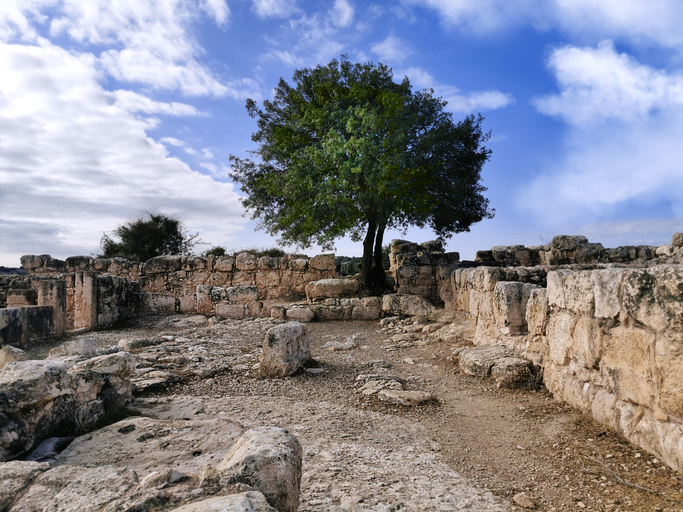
Did the 9th fight in ancient Judea during the Bar Kokhba Revolt? (Credit: lermannika via Getty Images)
The disappearance of the Roman Ninth Legion remains one of the most intriguing mysteries of ancient military history. Though their fate is lost to time, historians have proposed several compelling theories which seek to explain what really happened – ranging from battlefield annihilation to quiet reassignment.
Lost in Scotland or Northern England
Countless theories have emerged to explain the mysterious disappearance of the Ninth Legion, but one of the most enduring suggests a violent end in the wilds of northern Britain. According to this view – popularised by 19th-century German historian Theodor Mommsen – the legion was annihilated in a brutal ambush or uprising by local tribes such as the Brigantes or Caledonians, a catastrophe so severe it may have spurred the later construction of Hadrian’s Wall in the 120s as a vital line of defence. This dramatic theory more recently captured the popular imagination in 2011’s The Eagle, a film inspired by Rosemary Sutcliff’s novel The Eagle of the Ninth, where a young Roman embarks on a perilous quest to reclaim the legion’s lost eagle standard from the shadowy north. Whether legend or fact, the idea of the Ninth’s destruction has become the most dramatic – and tragic – of all their possible fates.
Lost in Europe
Did the Roman 9th Legion disappear not in Britain but in Europe? Evidence including the stamped bricks and inscriptions from Nijmegen, points to the legion being stationed at Noviomagus Batavorum in the Rhine delta after its time in Britain. Does this suggest it met its end in later campaigns on the continent, possibly during conflicts on the Rhine, Danube, or even in the East during Emperor Trajan’s Parthian campaigns?
Lost in London
A third – albeit less well-known – hypothesis, considers the possibility of the legion being lost or disbanded after involvement in unrest in southern Britain, a collection of conflicts between 117 and 138 AD that has become known as the Hadrianic War. This theory is supported by archaeological evidence of violent events in Londinium around 125/6 AD during the reign of Hadrian, though there’s no direct evidence of links to the Ninth Legion.
Other Theories
As well as the mainstream theories about the Ninth Legion’s fate, several other theories have emerged over the years. One of the most notable suggests that the legion was transferred to the eastern provinces and destroyed during the Bar Kokhba revolt in Judea (132 – 135 AD). This idea is based on the timing of the legion’s disappearance from historical record, and the heavy Roman losses reported in Judea during that uprising. Another related theory considers the possibility that the Ninth was destroyed fighting in Armenia during Marcus Aurelius’s war against the Parthians between 161 and 166 AD.
Mightier Than The Sword
Another strong possibility as to the final fate of the Ninth is that the legion wasn’t destroyed in an epic battle to the death, but instead simply quietly disbanded, with the soldiers being reassigned or redeployed and assimilated into other legions across the Empire as part of an overarching military re-organisation. A legion destroyed by the pen, not the sword.
The Roman 9th Legion: Lost But Not Forgotten
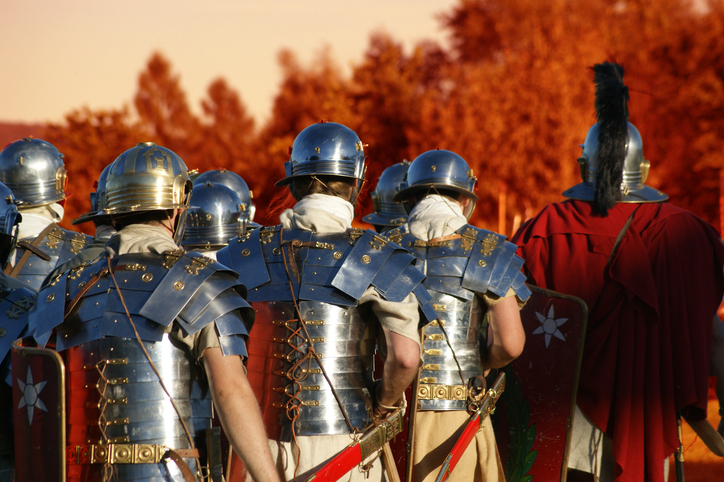
What happened to Legio IX Hispana? (Credit: tellmemore000 via Getty Images)
While this lost Roman legion disappeared from the historical record, along with other supposed lost legions the Ninth remains one of antiquity’s most enduring enigmas, their fate endlessly debated by scholars, historians, archaeologists and enthusiasts alike.
From their fabled beginnings under Julius Caesar to an imagined last stand in the forests of Scotland, the Ninth Legion’s legacy is woven into the fabric of Roman military history.


